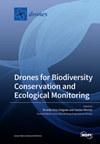Blockchain-Enabled Infection Sample Collection System Using Two-Echelon Drone-Assisted Mechanism
IF 4.4
2区 地球科学
Q1 REMOTE SENSING
引用次数: 0
Abstract
The collection and transportation of samples are crucial steps in stopping the initial spread of infectious diseases. This process demands high levels of safety and timeliness. The rapid advancement of technologies such as the Internet of Things (IoT) and blockchain offers a viable solution to this challenge. To this end, we propose a Blockchain-enabled Infection Sample Collection system (BISC) consisting of a two-echelon drone-assisted mechanism. The system utilizes collector drones to gather samples from user points and transport them to designated transit points, while deliverer drones convey the packaged samples from transit points to testing centers. We formulate the described problem as a Two-Echelon Heterogeneous Drone Routing Problem with Transit point Synchronization (2E-HDRP-TS). To obtain near-optimal solutions to 2E-HDRP-TS, we introduce a multi-objective Adaptive Large Neighborhood Search algorithm for Drone Routing (ALNS-RD). The algorithm’s multi-objective functions are designed to minimize the total collection time of infection samples and the exposure index. In addition to traditional search operators, ALNS-RD incorporates two new search operators based on flight distance and exposure index to enhance solution efficiency and safety. Through a comparison with benchmark algorithms such as NSGA-II and MOLNS, the effectiveness and efficiency of the proposed ALNS-RD algorithm are validated, demonstrating its superior performance across all five instances with diverse complexity levels.利用双梯队无人机辅助机制的区块链感染样本采集系统
样本的采集和运输是阻止传染病最初传播的关键步骤。这一过程要求高度的安全性和及时性。物联网(IoT)和区块链等技术的快速发展为应对这一挑战提供了可行的解决方案。为此,我们提出了一种由区块链支持的感染样本采集系统(BISC),该系统由一个双梯队无人机辅助机制组成。该系统利用收集者无人机从用户点收集样本并运送到指定中转点,而运送者无人机则将包装好的样本从中转点运送到检测中心。我们将所述问题表述为具有中转点同步功能的双梯队异构无人机路由问题(2E-HDRP-TS)。为了获得 2E-HDRP-TS 的近似最优解,我们引入了多目标自适应无人机路由大邻域搜索算法(ALNS-RD)。该算法的多目标函数旨在最小化感染样本的总收集时间和暴露指数。除了传统的搜索算子外,ALNS-RD 还加入了两个基于飞行距离和暴露指数的新搜索算子,以提高解决方案的效率和安全性。通过与 NSGA-II 和 MOLNS 等基准算法的比较,验证了所提出的 ALNS-RD 算法的有效性和效率,证明了它在复杂度不同的所有五个实例中都表现出卓越的性能。
本文章由计算机程序翻译,如有差异,请以英文原文为准。
求助全文
约1分钟内获得全文
求助全文

 求助内容:
求助内容: 应助结果提醒方式:
应助结果提醒方式:


